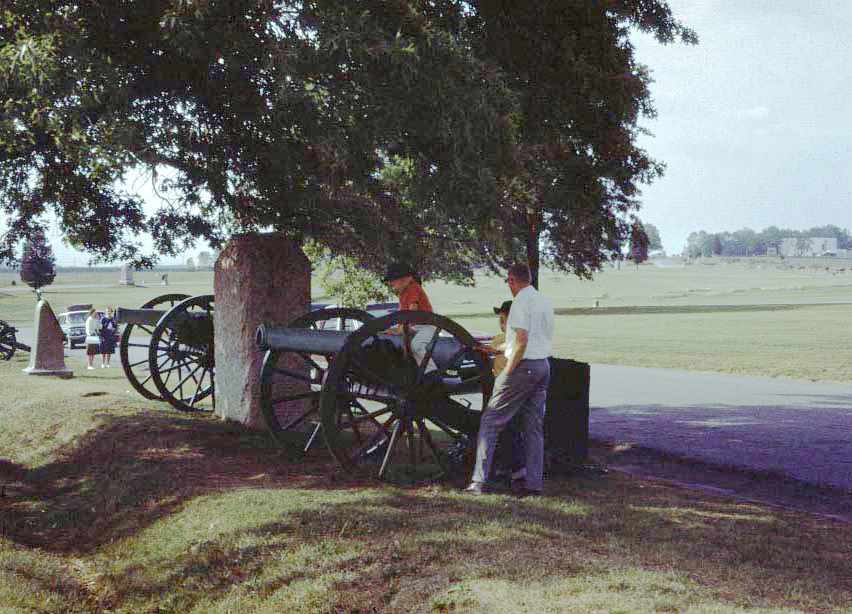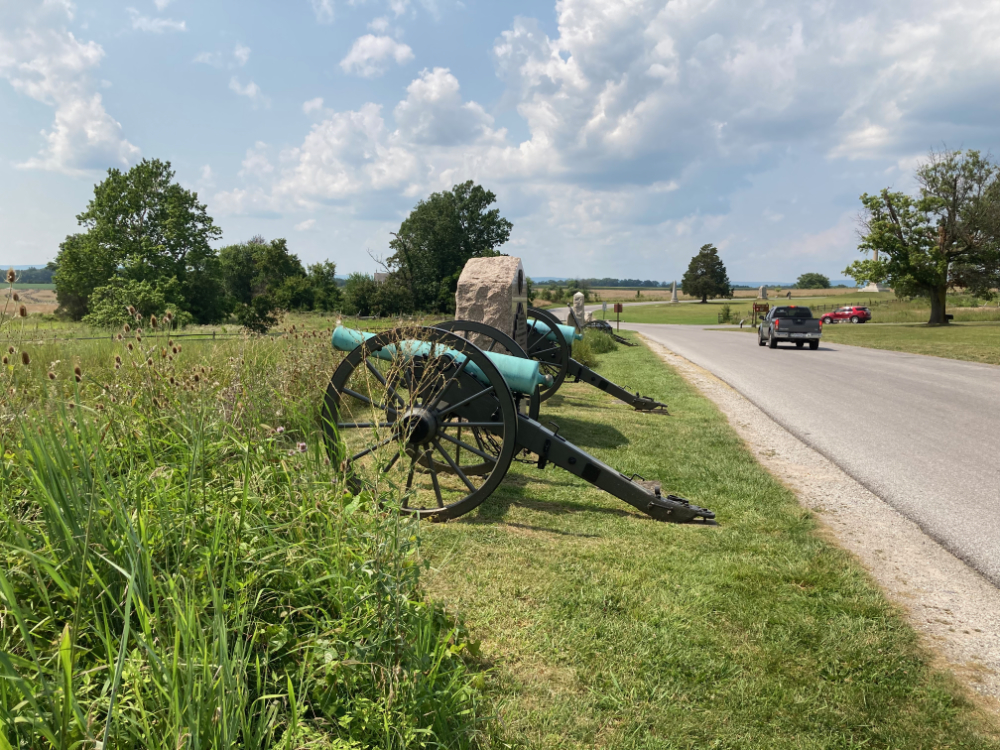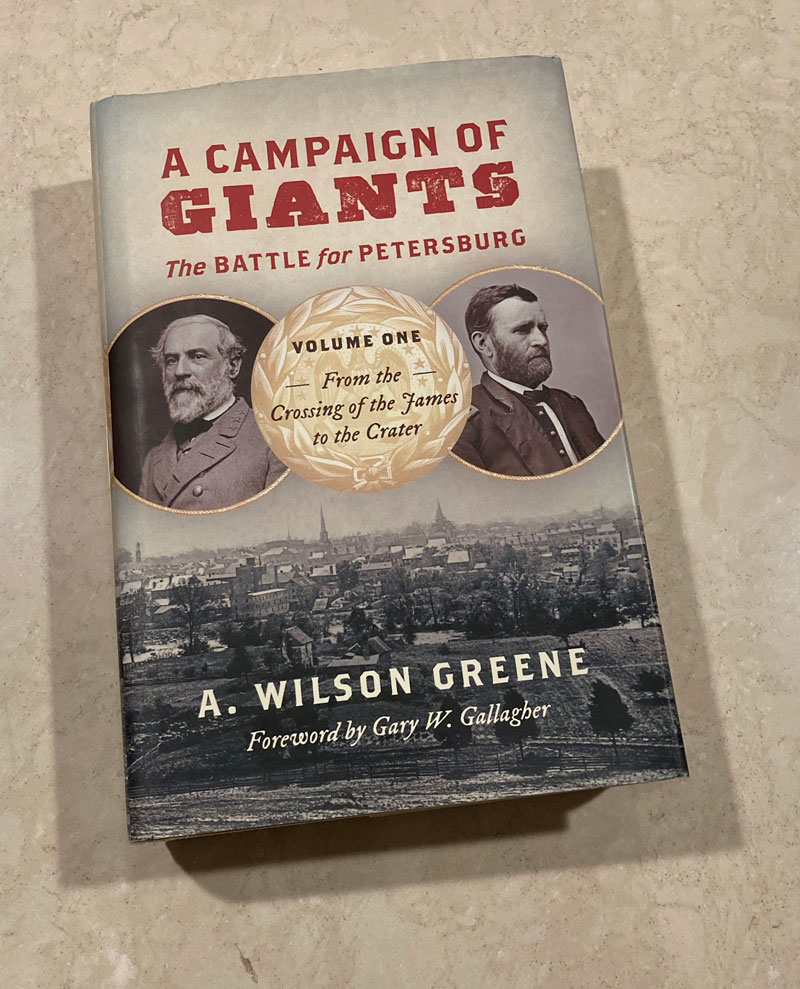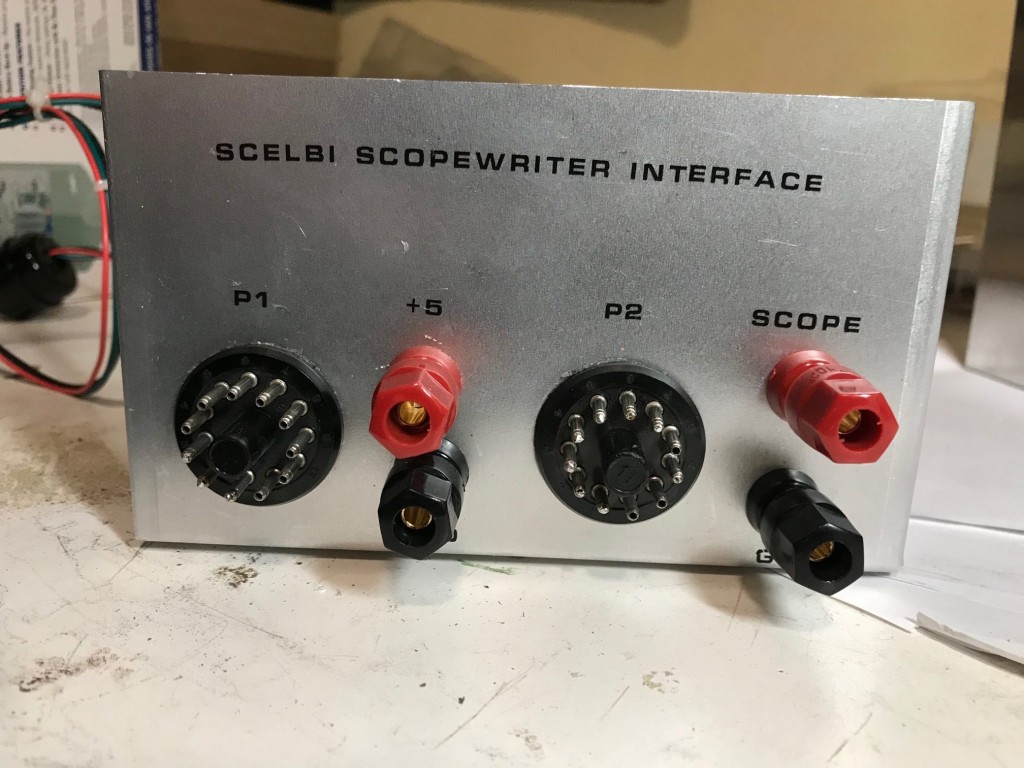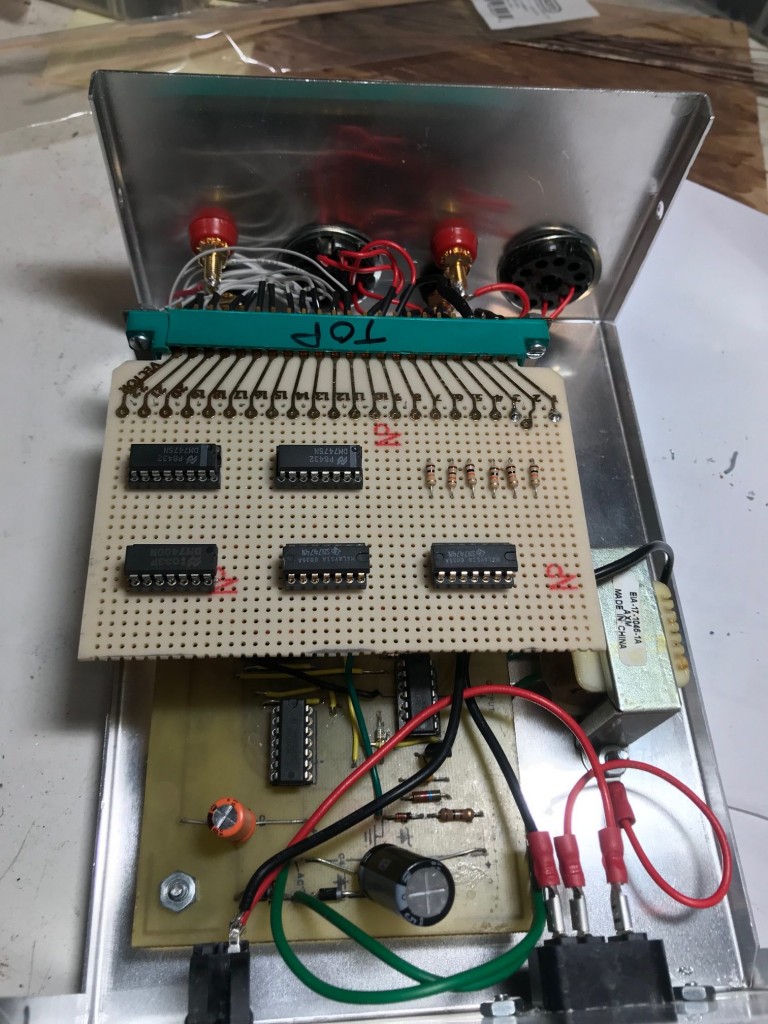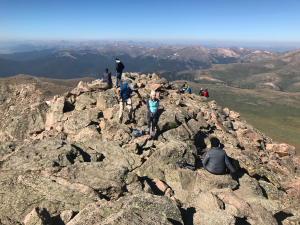I thought that I would do some investigation into the recent US presidential election. I have long maintained that increasing the level of higher education among our people may be the best way to prevent demagogues like President-elect Trump from managing to get themselves elected. However, there has been a lot of discussion about the economy being one of the root causes of Trump’s victory. I figured it would be useful to examine both theories.
To examine the impact of the economy on the election, I figured looking at the gross domestic product per capita of the various states would be a good way to start. This, in essence, gives a bit of a measure of the wealth of the inhabitants of the various states. I took the top ten and bottom ten states in this category and compared them against election results.
It turns out that Harris took the top 6 of the states with top GDP(per capita) and 7 of the top 10.
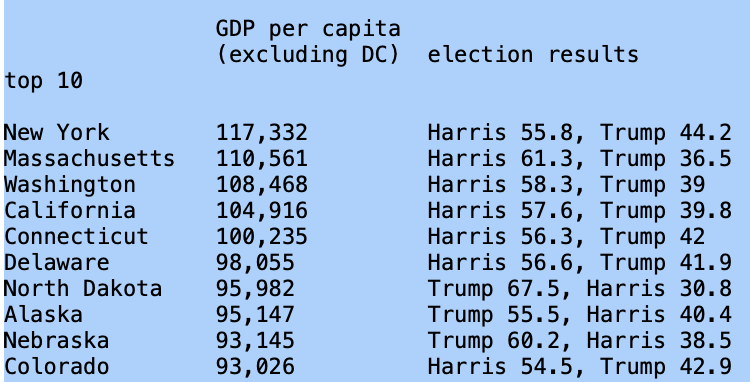
Looking at states with bottom GDP(per capita), Trump took 9 of those states, 8 of them by very large margins.
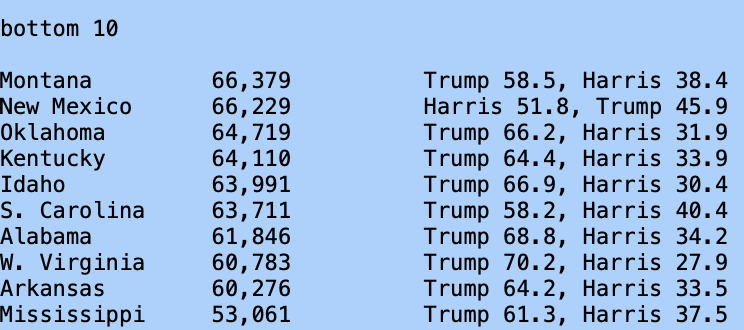
So it appears that GDP(per capita) had a significant impact on the outcome of the election, but I figured I would look into the impact of education, as well.
Here, the result is far more dramatic, with Harris taking all 10 of the top 10 states with the highest percentage of inhabitants with bachelor’s degrees or higher.

The bottom 10 version of this list is also dramatic, with Trump winning 9 of the 10 states with the least educated population. The sole Harris victory in these states goes to New Mexico, which has the 41st least educated population, just making this list.
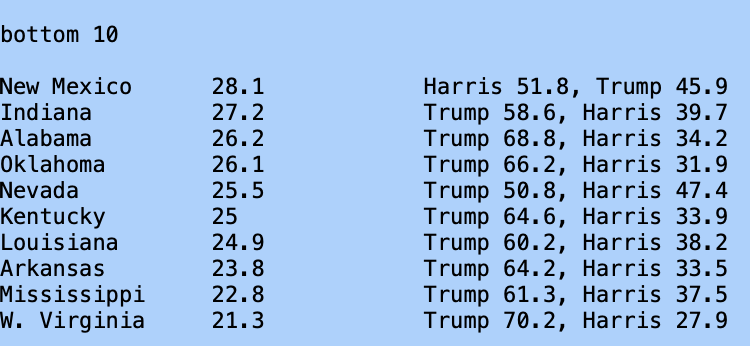
Another thing to consider is that of the 10 highest GDP(per capita) states, 4 also appear on the top 10 educated list. Of the states with the lowest GDP(per capita) states, 7 of them also appear on the bottom 10 educated list. None of the highest GDP(per capita) states appear on the bottom educated list and none of the lowest GDP(per capita) states appear on the top educated list.
Thus, it appears that education has a relationship to GDP(per capita). I would say that it’s not an absolute thing that increasing education increases GDP(per capita). It probably increases the odds of improving a state’s GDP(per capita). Also, high GDP regions may be better positioned to educate their young and attract highly educated people to migrate from other regions, thus increasing the education ranking.
Back to the election, while states with better GDP seem to have favored Harris, it’s not as strong a relationship as a college-level education is. I’ve said to my friends in the past that the best way to reduce the chances of a demagogue like Trump from taking power is to increase the level of education of the population, particularly in currently neglected subjects like civics.
Perhaps Democratic party leaders like Biden already understand this, which may be one reason they are pushing for free, universal higher education.
However, upon reflection, this will only help to some extent, as I believe in the USA, most young people who are intellectually and emotionally equipped for a higher education are already getting this education. Our best bet going forward is to increase emphasis on civics in high schools, which is as close to universal as we will ever get in terms of education.
Data Sources
1) https://en.wikipedia.org/wiki/List_of_U.S._states_and_territories_by_GDP
2) https://worldpopulationreview.com/state-rankings/most-educated-states
3) https://www.bostonglobe.com/nation/politics/elections/2024-president-results/

